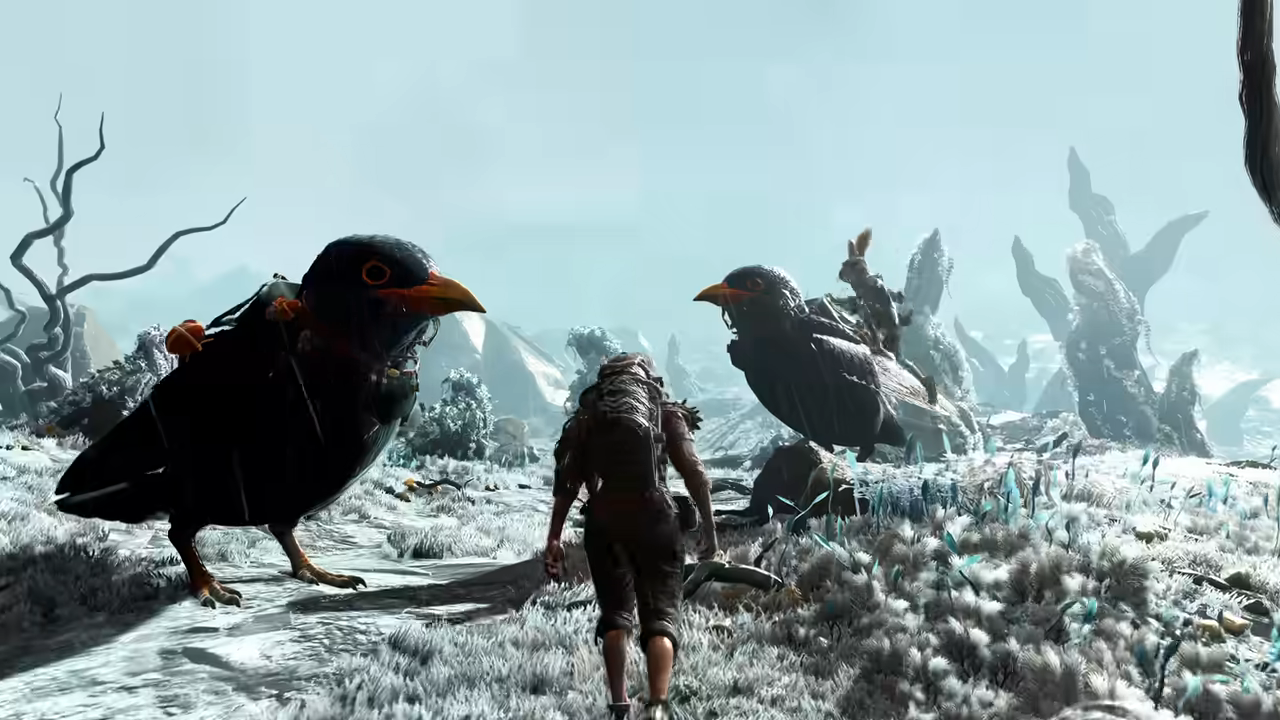
Judas: Gameplay Overview of BioShock Creator's Next Game
If you haven’t seen my 75-minute interview with BioShock creator Ken Levine detailing the journey he’s been on for the past decade in building something entirely new with Judas, check that out below. But if you just want to see the new gameplay footage that developer Ghost Story Games gave us to accompany that interview, I’ve got you covered right here. Check the video above.
That said, I can’t tell you any more about Judas that Ken didn’t already talk about in the interview, so as not to spoil anything for you, but I can describe what’s going on in the footage that was provided.
Let’s start right where the game does: with you being reprinted! It looks incredibly painful, and the fact that you’re being reprinted at all means that, you guessed it, you’ve been dead for some indeterminate amount of time. But I’m getting a little ahead of myself. You play as Judas, a hacker and self-taught engineer who’s part of a multi-generational trip from Earth to a new planet called Proxima Centauri aboard the colony ship called the Mayflower. The capital-M Mission is to continue the human race after departing Earth due to a bacterial plague. Also, on board this ship, you’re not particularly well-liked! See, it turns out that things went seriously sideways, and it’s all your fault.
It turns out that things went seriously sideways on the Mayflower, and it’s all your fault.
Now that you live again, you’ve got the three holographic heads of the ship to contend with: Tom, the ship’s head of security who wants to protect the Mission at all costs; Dr. Okeke, the ship’s medical officer who embraces a robots-are-the-way-forward mindset and becomes Nefertiti after abandoning all of her biological self; and Hope, the ship’s counselor. But there’s a family dynamic in play here. Tom is married to Nefertiti, and Hope is their adopted daughter. So why is Hope robotic underneath? Because they’re all robots, which Judas discovered and told them all about, throwing the entire ship into chaos and causing an existential crisis for everyone – particularly Hope, who sees deletion as the only way out of her endless existence, and like the T-800, she cannot self-terminate. That’s why she needs your help.
Judas’s “narrative LEGO” dynamic is all about the choices you make during gameplay. Who will you help out, and as a result, who will you piss off? You need to get one of them back in their robot body so that they can pilot the ship through the impassable-by-humans asteroid field orbiting Proxima Centauri so you can get off the sinking ship that is the Mayflower. Depending on how you play this game of tug-of-war, no two playthroughs might ever be quite the same. Helping one might yield rewards, for instance, such as showing up to help you out when you’re clearly outnumbered. Conversely, if you ignore one of the Big Three for too long or go against one of them by helping one or both of the others, they might get mad at you – again, all dynamically within gameplay – by, say, locking the door you’re trying to get through while being chased by enemies.
But what about combat? It will look familiar to BioShock veterans (though, to be clear, Judas is its own game and in no way connected to any BioShock game). You’ve got a gun in your right hand, and abilities in your left hand. Pistols and shotguns are two of your most prominent tools of the trade – at least of your right hand – when trying to survive the robots-gone-wild insanity aboard the Mayflower. You’ll fight Fix-It robots who used to tidy up the ship by shooting them or zapping them with lightning, one of the powers you can acquire for your left hand. Even better if there happens to be water on the ground that you can electrify, thus taking out multiple enemies at a time.
But like I said, Judas is a hacker, so she can hack lots of things around the ship, which very much includes your robotic attackers. You can make them do any number of things, from turning passive to aggressive to sheer chaos (in this case, go into kamikaze mode).
As for the bizarre bionic beasts you’ll battle? They used to serve normal functions aboard the ship, but as things got crazy, so did they. The Dentist, as an example, used to walk around the ship, going to meet the people who needed dental care. This is a multi-generational mission, remember? You’re going to need your teeth cleaned every six months! Now, though, they angrily seek you out looking to show you the wrong end of their drill. Thanks for the nightmares, Ken.
Another of my favorite enemies was the Deputy, a Bojack Horseman-looking, long-rifle-wielding lawman who likes to fire his gun into the air when he gets riled up. Fortunately, there’s a lot a neck to aim for when going for headshots against these guys.
And remember how I said the Mayflower was a colony ship? It’s an enormous one – the size of a city! – and helping you get around it is your trusty Clifford-sized robot-dog companion Scutty. He can take you from district to district in order to go do new missions for whichever of the Big Three you’re backing at that given moment.
Be sure to check out the full interview with Ken Levine for much more, including the roguelike loop that’s baked into Judas’s “narrative LEGO”-powered, player-agency-driven first-person shooter. And stay tuned for much more on Judas on IGN in the coming months. There’s still a lot left to find out about Ken Levine’s first game since the seminal BioShock Infinite back in 2013!
Ryan McCaffrey is IGN’s executive editor of previews and host of both IGN’s weekly Xbox show, Podcast Unlocked, as well as our monthly(-ish) interview show, IGN Unfiltered. He’s a North Jersey guy, so it’s “Taylor ham,” not “pork roll.” Debate it with him on Twitter at @DMC_Ryan.






